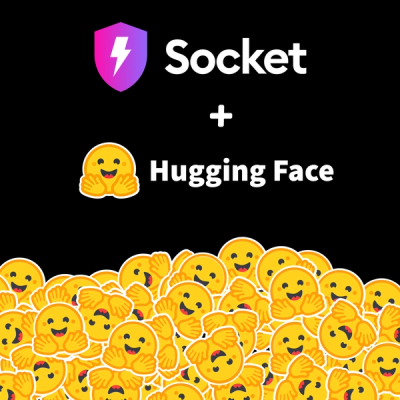CouchBackup


_____ _ ______ _
/ __ \ | | | ___ \ | |
| / \/ ___ _ _ ___| |__ | |_/ / __ _ ___| | ___ _ _ __
| | / _ \| | | |/ __| '_ \| ___ \/ _` |/ __| |/ / | | | '_ \
| \__/\ (_) | |_| | (__| | | | |_/ / (_| | (__| <| |_| | |_) |
\____/\___/ \__,_|\___|_| |_\____/ \__,_|\___|_|\_\\__,_| .__/
| |
|_|
CouchBackup is a command-line utility that backs up a Cloudant or CouchDB database to a text file.
It comes with a companion command-line utility that can restore the backed up data.
Limitations
CouchBackup has some restrictions in the data it's able to backup:
couchbackup does not do CouchDB replication as such, it simply streams through a database's _changes feed, and uses POST /db/_bulk_get to fetch the documents, storing the documents it finds on disk.couchbackup does not support backing up or restoring databases containing documents with attachments. The recommendation is to store attachments directly in an object store. The "attachments" option is provided as-is and is not supported. This option is for Apache CouchDB only and is experimental. DO NOT USE THIS OPTION WITH IBM Cloudant backups. Note
Installation
To install the latest released version use npm:
npm install -g @cloudant/couchbackup
Requirements
- Node.js LTS version 20, or 22.
- The minimum required CouchDB version is 2.0.0.
Snapshots
The latest builds of the main branch are available on npm with the snapshot tag. Use the snapshot tag if you want to experiment with an unreleased fix or new function, but please note that snapshot versions are not supported.
Usage
Use either environment variables or command-line options to specify the URL of the CouchDB or Cloudant instance, and the database to work with.
The URL
To define the URL of the CouchDB instance set the COUCH_URL environment variable:
export COUCH_URL=http://localhost:5984
or
export COUCH_URL=https://myusername:mypassword@myhost.cloudant.com
Or use the --url command-line parameter.
When passing credentials in the user information subcomponent of the URL
they must be percent encoded.
Specifically, within either the username or password, the characters : / ? # [ ] @ %
MUST be precent-encoded, other characters MAY be percent-encoded.
For example, for the username user123 and password colon:at@321:
https://user123:colon%3aat%40321@localhost:5984
Note take extra care to escape shell reserved characters when
setting the environment variable or command-line parameter.
The Database name
To define the name of the database to backup or restore, set the COUCH_DATABASE environment variable:
export COUCH_DATABASE=animaldb
Or use the --db command-line parameter
Backup
To backup a database to a text file, use the couchbackup command, directing the output to a text file:
couchbackup > backup.txt
Another way of backing up is to set the COUCH_URL environment variable only and supply the database name on the command-line:
couchbackup --db animaldb > animaldb.txt
Logging & resuming backups
You may also create a log file which records the progress of the backup with the --log parameter, for example:
couchbackup --db animaldb --log animaldb.log > animaldb.txt
Use this log file to resume backups with --resume true:
couchbackup --db animaldb --log animaldb.log --resume true >> animaldb.txt
The --resume true option works for a backup that has finished spooling changes, but has not yet completed downloading all the necessary batches of documents. It is not an incremental backup solution.
You may also specify the name of the output file, rather than directing the backup data to stdout:
couchbackup --db animaldb --log animaldb.log --resume true --output animaldb.txt
Compatibility note
When using --resume use the same version of couchbackup that started the backup.
Restore
Now restore the backup text file to a new, empty, existing database using the couchrestore:
cat animaldb.txt | couchrestore
or specifying the database name on the command-line:
cat animaldb.txt | couchrestore --db animaldb2
Compatibility note
Do not use an older version of couchbackup to restore a backup created with a newer version.
Newer versions of couchbackup can restore backups created by older versions within the same major version.
Compressed backups
To compress the backup data before storing to disk pipe the contents through gzip:
couchbackup --db animaldb | gzip > animaldb.txt.gz
and restore the file with:
cat animaldb.tar.gz | gunzip | couchdbrestore --db animaldb2
Encrypted backups
Similarly to compression it is possible to pipe the backup content through an
encryption or decryption utility. For example with openssl:
couchbackup --db animaldb | openssl aes-128-cbc -pass pass:12345 > encrypted_animal.db
openssl aes-128-cbc -d -in encrypted_animal.db -pass pass:12345 | couchrestore --db animaldb2
Note that the content is not encrypted in the
backup tool before piping to the encryption utility.
What's in a backup file?
A backup file is a text file where each line is either a JSON object of backup metadata
or a JSON array of backed up document revision objects, for example:
{"name":"@cloudant/couchbackup","version":"2.9.10","mode":"full"}
[{"_id": "1","a":1},{"_id": "2","a":2},...]
[{"_id": "501","a":501},{"_id": "502","a":502}]
The number of document revisions in a backup array varies. It typically has
buffer_size elements, but may be more if there are also leaf revisions returned
from the server or fewer if it is the last batch.
What's in a log file?
A log file has a line:
- for every batch of document ids that
couchbackup needs to fetch, for example: :t batch56 [{"id":"a"},{"id":"b"}]
- for every batch that
couchbackup has fetched and stored, for example: :d batch56
- to indicate that the changes feed was fully consumed, for example:
:changes_complete
What's shallow mode?
When you run couchbackup with --mode shallow couchbackup performs a simpler backup.
It only backs up the winning revisions and ignores any conflicting revisions.
This is a faster, but less complete backup.
Note: The --log, --resume, and --parallelism are invalid for --mode shallow backups.
Why use CouchBackup?
The easiest way to backup a CouchDB database is to copy the ".couch" file. This is fine on a single-node instance, but when running multi-node
Cloudant or using CouchDB 2.0 or greater, the ".couch" file only has a single shard of data. This utility allows simple backups of CouchDB
or Cloudant database using the HTTP API.
This tool can script the backup of your databases. Move the backup and log files to cheap Object Storage so that you have copies of your precious data.
Options reference
Environment variables
COUCH_URL - the URL of the CouchDB/Cloudant server, for example: http://127.0.0.1:5984COUCH_DATABASE - the name of the database to act upon, for example: mydb (default test)COUCH_PARALLELISM - the number of HTTP requests to perform in parallel when restoring a backup, for example: 10 (Default 5)COUCH_BUFFER_SIZE - the number of documents fetched and restored at once, for example: 100 (default 500).COUCH_REQUEST_TIMEOUT - the number of milliseconds to wait for a response to a HTTP request before retrying the request, for example: 10000 (Default 120000)COUCH_LOG - the file to store logging information during backupCOUCH_RESUME - if true, resumes an earlier backup from its last known position (requires a log file)COUCH_OUTPUT - the file name to store the backup data (defaults to stdout)COUCH_MODE - if shallow, does only a superficial backup ignoring conflicts. Defaults to full - a full backup.COUCH_QUIET - if true, suppresses the individual batch messages to the console during CLI backup and restoreCLOUDANT_IAM_API_KEY - optional IAM API key
to use to access the Cloudant database instead of user information credentials in the URL. The endpoint used to retrieve the token defaults to
https://iam.cloud.ibm.com/identity/token, but can be overridden if necessary using the CLOUDANT_IAM_TOKEN_URL environment variable.COUCH_ATTACHMENTS - EXPERIMENTAL & UNSUPPORTED (see Note) if true will include attachments as part of the backup or restore process.DEBUG - if set to couchbackup, all debug messages print on stderr during a backup or restore process
Note: Environment variables are only used with the CLI. When
using programmatically use the opts dictionary.
Command-line parameters
--url - same as COUCH_URL environment variable--db - same as COUCH_DATABASE--parallelism - same as COUCH_PARALLELISM--buffer-size - same as COUCH_BUFFER_SIZE--request-timeout - same as COUCH_REQUEST_TIMEOUT--log - same as COUCH_LOG--resume - same as COUCH_RESUME--output - same as COUCH_OUTPUT--mode - same as COUCH_MODE--iam-api-key - same as CLOUDANT_IAM_API_KEY--quiet - same as COUCH_QUIET--attachments - EXPERIMENTAL & UNSUPPORTED (see Note) same as COUCH_ATTACHMENTS
Using programmatically
You can use couchbackup programmatically. First install
couchbackup into your project with npm install --save @cloudant/couchbackup.
Then you can import the library into your code:
const couchbackup = require('@cloudant/couchbackup');
The library exports two main functions:
backup - backup from a database to a writable stream.restore - restore from a readable stream to an empty database.
Examples
See the examples folder for example scripts showing how to
use the library.
Backup
The backup function takes a source database URL, a stream to write to,
backup options and a callback for completion.
backup: function(srcUrl, targetStream, opts, callback) { }
The opts dictionary can contain values which map to a subset of the
environment variables defined above. Those related to the source and
target locations are not required.
parallelism: see COUCH_PARALLELISM.bufferSize: see COUCH_BUFFER_SIZE.requestTimeout: see COUCH_REQUEST_TIMEOUT.log: see COUCH_LOG.resume: see COUCH_RESUME.mode: see COUCH_MODE.iamApiKey: see CLOUDANT_IAM_API_KEY.iamTokenUrl: optionally used with iamApiKey to override the default URL for
retrieving IAM tokens.attachments: EXPERIMENTAL & UNSUPPORTED (see Note), see CLOUDANT_ATTACHMENTS.
When the backup completes or fails the callback functions gets called with
the standard err, data parameters.
The backup function returns an event emitter. You can subscribe to:
changes - when a batch of changes has been written to log stream.written - when a batch of documents has been written to backup stream.finished - emitted once when all documents are backed up.
Backup data to a stream:
couchbackup.backup(
'https://examples.cloudant.com/animaldb',
process.stdout,
{parallelism: 2},
function(err, data) {
if (err) {
console.error("Failed! " + err);
} else {
console.error("Success! " + data);
}
});
Or to a file:
couchbackup.backup(
'https://examples.cloudant.com/animaldb',
fs.createWriteStream(filename),
{parallelism: 2},
function(err, data) {
if (err) {
console.error("Failed! " + err);
} else {
console.error("Success! " + data);
}
});
Restore
The restore function takes a readable stream containing the data emitted
by the backup function and uploads that to a Cloudant database.
Note: A target database must be a new and empty database.
restore: function(srcStream, targetUrl, opts, callback) { }
The opts dictionary can contain values which map to a subset of the
environment variables defined above. Those related to the source and
target locations are not required.
parallelism: see COUCH_PARALLELISM.bufferSize: see COUCH_BUFFER_SIZE.requestTimeout: see COUCH_REQUEST_TIMEOUT.iamApiKey: see CLOUDANT_IAM_API_KEY.iamTokenUrl: optionally used with iamApiKey to override the default URL for
retrieving IAM tokens.attachments: EXPERIMENTAL & UNSUPPORTED (see Note), see CLOUDANT_ATTACHMENTS.
When the restore completes or fails the callback functions gets called with
the standard err, data parameters.
The restore function returns an event emitter. You can subscribe to:
restored - when a batch of documents is restored.finished - emitted once when all documents are restored.
The srcStream for the restore is a backup file.
In the case of an incomplete backup the file could be corrupt and in that
case the restore emits a BackupFileJsonError.
Restore data from a stream:
couchbackup.restore(
process.stdin,
'https://examples.cloudant.com/new-animaldb',
{parallelism: 2},
function(err, data) {
if (err) {
console.error("Failed! " + err);
} else {
console.error("Success! " + data);
}
});
Or from a file:
couchbackup.restore(
fs.createReadStream(filename),
'https://examples.cloudant.com/new-animaldb',
{parallelism: 2},
function(err, data) {
if (err) {
console.error("Failed! " + err);
} else {
console.error("Success! " + data);
}
});
Error Handling
The couchbackup and couchrestore processes are able to tolerate many errors even over an unreliable network.
Failed requests retry at least twice after a back-off delay.
However, certain errors can't tolerate failures:
- invalid configuration
- failed validation checks (for example: auth, database existence,
_bulk_get endpoint avaialbility)
API
When using the library programmatically in the case of a fatal error
the callback function gets called with null, error arguments.
CLI Exit Codes
On fatal errors, couchbackup and couchrestore exit with non-zero exit codes. This section
details them.
common to both couchbackup and couchrestore
1: unknown CLI option or generic error.2: invalid CLI option.10: backup source or restore target database does not exist.11: unauthorized credentials for the database.12: invalid permissions for the database.40: database returned a fatal HTTP error.
couchbackup
20: --resume without a log file.21: the resume log file does not exist.22: incomplete changes in log file.23: the log file already exists, but --resume was not used.30: error spooling changes from the database.50: source database does not support /_bulk_get endpoint.
couchrestore
13: restore target database is not new and empty.60: attachments option used for backup, but wasn't used for restore.61: attachments option used for restore, but wasn't used for backup.
Note on attachments
TLDR; If you backup a database that has attachments without using the attachments option couchbackup can't restore it.
As documented above couchbackup does not support backing up or restoring databases containing documents with attachments.
The recommendation is to store attachments directly in an object store with a link in the JSON document instead of using the
native attachment API.
With experimental attachments option
The attachments option is provided as-is and is not supported. This option is for Apache CouchDB only and is experimental. Do not use this option with IBM Cloudant backups.
Without experimental attachments option
Backing up a database that includes documents with attachments appears to complete successfully. However, the attachment
content is not downloaded and the backup file contains attachment metadata. So attempts to
restore the backup result in errors because the attachment metadata references attachments that are not present
in the restored database.





